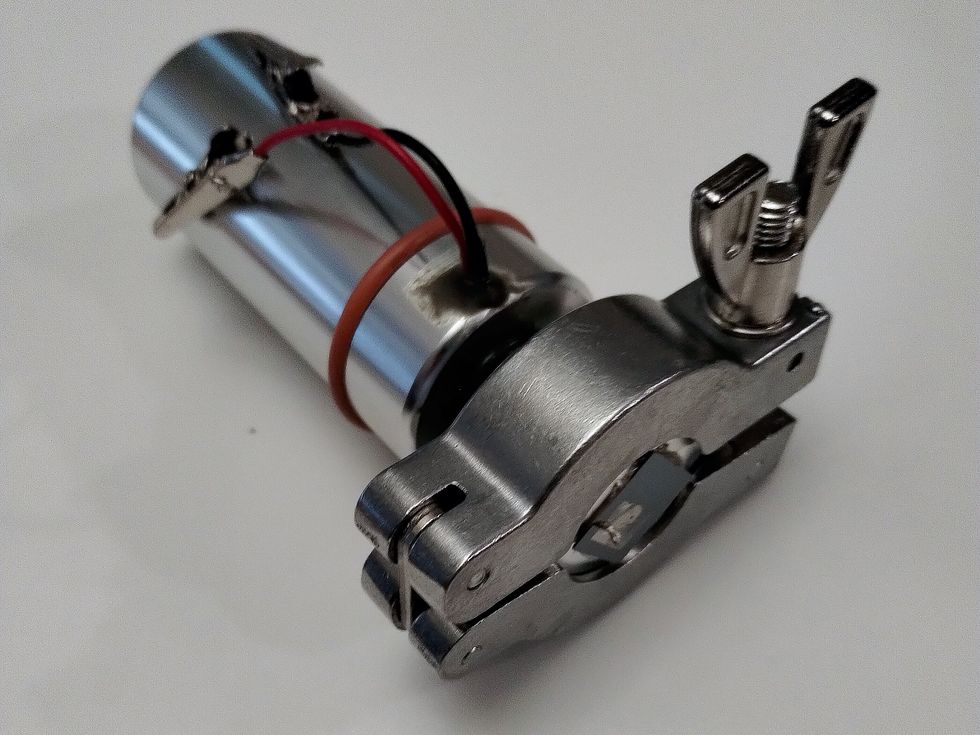A startup named Orbital Arc has unveiled a groundbreaking spacecraft thruster that promises to be up to 40 percent more power efficient than current technologies. Utilizing a fuel that costs less than a thousandth of conventional options, this new thruster design represents a significant advancement in satellite propulsion systems. The company claims that their thruster, which is small enough to fit on low-Earth orbit satellites, could also generate sufficient power for interplanetary missions.
According to Jonathan Huffman, the founder of Orbital Arc, the new design allows for a thruster that measures about an inch across and weighs an eighth of the mass of traditional models. This is a remarkable feat considering that existing thrusters generally require more significant mass to produce additional thrust. Huffman explained, “there’s a certain point at which adding more mass to the thruster negates all of the benefits you can get from extra thrust.”
Revolutionizing Propulsion Technology
The current method for thruster operation typically involves creating and expelling plasma to generate thrust. In Hall thrusters, for instance, a magnetic field traps electrons, which collide with a noble gas like xenon to produce plasma. However, Orbital Arc’s innovation circumvents the need for plasma generation. Instead, their thruster incorporates nanoscale tips that emit ions, which are utilized to create intense electromagnetic fields.
Huffman’s journey to this innovative design began while working as a biotech consultant and a self-proclaimed “sci-fi nerd.” Tasked with designing futuristic technology for a video game, he researched advanced propulsion systems. His insights into the limitations of current ion thrusters spurred his realization that a more efficient system could be developed. He noted the challenges of increasing thrust without adding excessive weight, leading to the concept of a compact, high-output thruster.
The heart of Orbital Arc’s design is a chip embedded with millions of positively charged tips that direct gas flow—specifically, naphthalene, a compound commonly used in mothballs. As naphthalene molecules pass these charged tips, they become polarized and are subsequently trapped, releasing electrons that generate ion thrust. This design eliminates the energy losses associated with traditional plasma systems.
Huffman claims that early calculations indicate the naphthalene nanotip thruster can achieve a 30 to 40 percent improvement in power efficiency. In a recent test, just six of Orbital Arc’s tips produced approximately three times more ion current than an array of 320,000 tips from a team at MIT.
From Concept to Prototype
Currently, each prototype chip contains only six tips, fabricated using MEMS microfabrication techniques in a cleanroom at Oak Ridge National Laboratory. The next steps involve scaling up production and creating the thruster assembly, which Huffman describes as a straightforward process involving basic structural components and wiring.
Huffman anticipates that within two years, the company will have a market-ready product. He envisions small teams, including startups and research groups, as initial customers, confident that they will take the risk on this untested technology due to its expected performance and low cost.
Critics in the industry, however, express caution. Jonathan MacArthur, a postdoctoral researcher at Princeton University, suggests that while the low cost of naphthalene—approximately USD $1.50 per kilogram compared to USD $3,000 per kilogram for xenon—may be appealing, more data is needed to substantiate performance claims. He emphasized that potential customers often prioritize proven performance data when selecting propulsion systems.
Despite the skepticism, some experts believe there will be opportunities for small missions to adopt the new technology. Oliver Jia-Richards, a researcher at the University of Michigan, noted that customers may be willing to experiment with Orbital Arc’s thrusters, particularly as other startups like Enpulsion have successfully introduced novel propulsion technologies.
Huffman’s ambitions extend beyond just developing thrusters. He aims to reduce spacecraft mass significantly, enhancing mission capabilities. He stated, “If you cut dry mass off of spacecraft, you gain exponential benefits in its performance.” By incorporating Orbital Arc’s thrusters, missions could potentially achieve two-way human-rated missions to Jupiter without the need for refueling.
While the thruster is Orbital Arc’s first step, Huffman envisions an ultra-light spacecraft bus as the next phase of development, indicating a long-term commitment to pushing the boundaries of satellite propulsion technology.







